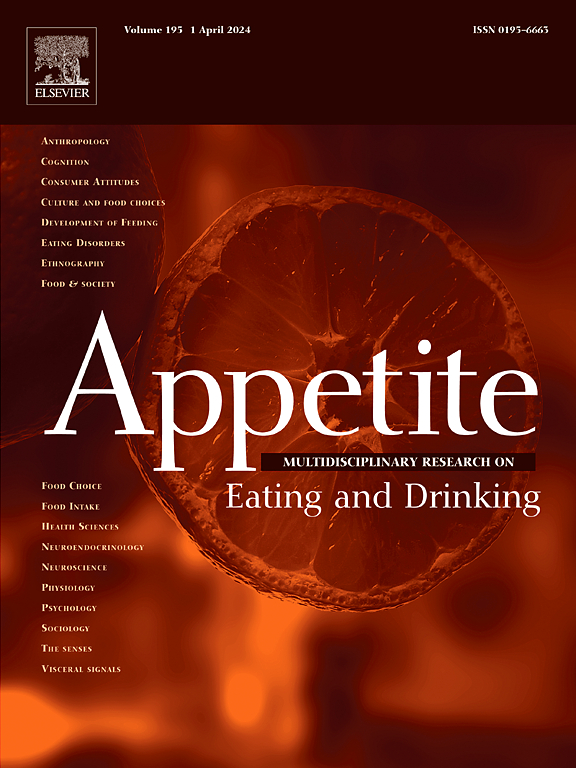Best practices for including sex as a variable in appetite research
IF 4.6
2区 医学
Q1 BEHAVIORAL SCIENCES
引用次数: 0
Abstract
Despite increasing recognition that sex is a critical variable in appetite research, many studies fail to include participants of both sexes, fail to consider reproductive physiology in participant selection, or include both sexes but fail to test for sex differences in outcomes. To help remedy this situation, this article seeks to engender enthusiasm for including sex as a variable in appetite research. We first illustrate some sex differences in healthy and disordered eating, including both male-female differences and differences across the menstrual cycle. We next provide methodological guidance for studies involving male and female participants around puberty, during reproductive adulthood, and during reproductive senescence. Studies in children ≥5 y of age should consider adrenarche and gonadarche. Appetite studies in girls and women following menarche and similarly aged males should consider the influences of sex-specific aspects the hypothalamic-pituitary-gonadal (HPG) axis function. The cyclicity of HPG function (i.e., the menstrual cycle) in girls and women presents the challenge of identifying of menstrual-cycle subphases, which are highly variable within and between individuals. Reproductive senescence refers to changes in HPG axis function that occur in both men and women beginning in mid-life. Current best practices involve consideration of hormone-assay methodology, experimental design, and statistical analyses. On the horizon are options based on wearable-sensors and nanotechnology. Well informed consideration of sex as a variable will accelerate progress in appetite research by increasing rigor, replicability, and relevance.
求助全文
约1分钟内获得全文
求助全文
来源期刊

Appetite
医学-行为科学
CiteScore
9.10
自引率
11.10%
发文量
566
审稿时长
13.4 weeks
期刊介绍:
Appetite is an international research journal specializing in cultural, social, psychological, sensory and physiological influences on the selection and intake of foods and drinks. It covers normal and disordered eating and drinking and welcomes studies of both human and non-human animal behaviour toward food. Appetite publishes research reports, reviews and commentaries. Thematic special issues appear regularly. From time to time the journal carries abstracts from professional meetings. Submissions to Appetite are expected to be based primarily on observations directly related to the selection and intake of foods and drinks; papers that are primarily focused on topics such as nutrition or obesity will not be considered unless they specifically make a novel scientific contribution to the understanding of appetite in line with the journal's aims and scope.
 求助内容:
求助内容: 应助结果提醒方式:
应助结果提醒方式:


